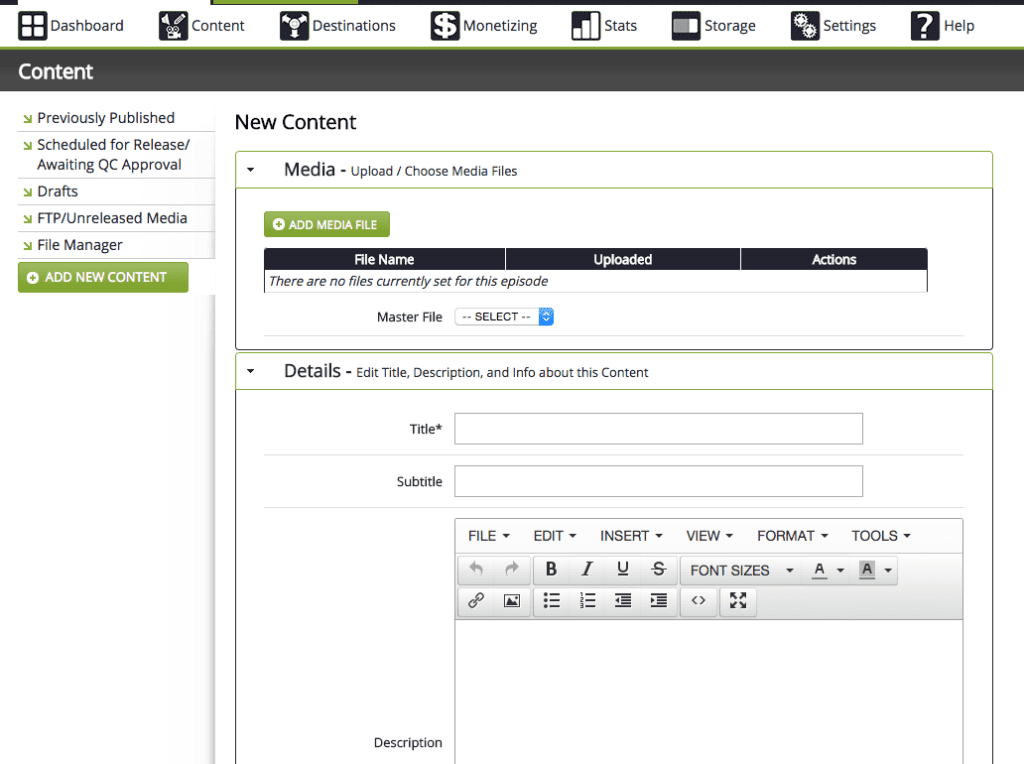There are countless YouTube videos and articles detailing how to start and produce a podcast. All this information can feel daunting to an entrepreneur. While you could spend thousands of dollars on equipment and pay someone additional thousands to produce your podcast, there is a simple path.
Hera Hub’s founder, Felena Hanson, shares a behind-the-scenes look at the exact process used to create an episode of The Flight Club Podcast. Since 2015, The Flight Club Podcast has been streaming on major platforms like iTunes, Stitcher, and Google Play and has recorded over 100 episodes. Scroll down past step one for her step-by-step video.
Step One: Invite & Schedule Your Podcast Guests
Sending the Invitation
Inviting a guest to be on your show doesn’t have to be complicated. Create a page on your website that has all the information. This page doesn’t have to be linked to your navigation. Be sure to include important information about your podcast, like what guests should expect, how they should prepare, and a link to schedule the interview. It is also helpful to share a previous episode so guests can get a feel for your style. Here’s an example of an invite page: https://herahub.com/schedulepodcast/
We don’t script our interviews, so we don’t provide guests with canned questions. We found that people spend way too much time preparing for the episode, and the conversation doesn’t flow as naturally. This, of course, is entirely up to you.
Scheduling the Recording Date
To simplify scheduling, consider using scheduling software that integrates with your calendar, like Calendly. This allows guests to easily pick a date that is available on your calendar for the time frame needed to record. Include day-of instructions or set up reminder emails to help automate the process and keep everyone on the same page. It is also easy for guests to reschedule when you choose to use a scheduling platform, saving you time and energy.
Utilizing Your Intake Form
Most scheduling software includes the ability to add a form. Forms will let you easily collect important information like social media handles, websites, and the bio of your guest. The content submitted by your guest will be saved to the calendar event created post-scheduling. This can make handing off important information to your team members a breeze. If you choose to keep to a specific script or outline, you can also use your intake form to further prepare guests for the upcoming interview by sending questions prior to the interview. (If you choose to do that.)
Video tutorial outlining Felena’s podcast process ⬇️
Step Two: Record & Publish Your Podcast
Recording
Recording your podcast doesn’t necessarily require a fancy studio and expensive equipment. We’ve tried a lot of things, but we’ve found that old-school corded headphones plugged into the 3.5mm jack are sufficient. For those wanting to record a high volume of podcasts while on the go, this can keep things easy. Another reason for choosing simple equipment is that there is less of a chance for audio disparity between the host and guest, which can be distracting.
There are lots of platforms, but we found Zoom to be the easiest option. The sound quality is good enough (if you have a good internet connection and decent headphones).
Prepare your Podcast for Publishing
It is pretty standard practice to have a recorded intro/outro for your podcast. The best part is you can create an intro pretty easily for your podcast. Fiverr is a great option to hire talent. Once you have the intro and have downloaded the .mp4 file you can splice it together using GarageBand (iOs) or Audacity for Windows users.

Publishing Your Recorded Podcast
Once the file is ready and you’ve made any necessary edits and added your intro/outro you can now upload it to your favorite podcast hosting company. We use Libsyn, however, there are others you can choose from, like Buzzsprout, PodBean and Transistor. Libsyn is simple and publishes podcasts to all major podcasting streaming services like Stitcher, iTunes, Google Play, and Spotify.
Hiring a virtual assistant to do the back-end legwork of preparing and publishing your content is very affordable and, again, saves time.
 Step Three: Share Your Podcast Episode
Step Three: Share Your Podcast Episode
Once your podcast has been syndicated, now is the time to share it with your audience. There are several ways you can repurpose your content.
- Embed the episode on your website as a blog post.
- Send the blog post with your podcast guest and invite them to share it with their audience.
- Share the episode on Facebook, Instagram, LinkedIn, etc – be sure to tag your guest for additional reach.
- Publish your episode on YouTube.
Summary
Creating a podcast can be as simple or complicated as you make it. Now you have all the tools you need to give your brand voice!

 Step Three: Share Your Podcast Episode
Step Three: Share Your Podcast Episode



